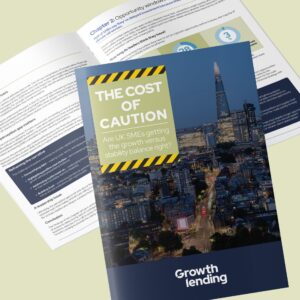How to use growth capital
The role that fundraising can play in accelerating your growth trajectory

We know that a lack of investment can cost businesses their growth, but when we talk about fundraising to accelerate growth, what does this actually mean?
How can business leaders use growth capital to enhance their outcomes? Why would a business actually raise growth capital? And what are the key things business leaders should be aware of, ahead of a growth capital fundraise?
We answer all of these questions and more, starting with the most obvious:
What is growth capital?
Growth capital can refer to several different types of funding for businesses, but the most obvious differentiator is whether the capital is raised by selling a stake in the business (growth capital via equity), or leveraged against a business’ assets, IP or forecasted revenue (growth capital via debt).
The most crucial – and obvious – component is that the capital will be used primarily to fuel growth.
Growth capital is usually best-suited to relatively mature companies that are at the scale-up stage and looking to expand further. Often, these businesses are more established than those that are venture capital-backed, but they still do not have enough spare capital to implement transformational growth strategies, hence the need for growth capital.
You can read more about growth capital for SMEs and scale-ups in our Ultimate Guide.
Why would a business raise growth capital?
Growth capital has a variety of uses that will differ depending on the needs of the company and where it is in the business lifecycle.
Scale-ups that are breaking even and growing may wish to use growth capital to scale their operations, without the equity dilution associated with venture capital and equity investment.
For more established businesses, growth capital can fuel ambitious growth plans, by providing a significant injection of cash.
In instances where a business is pre-profit, growth capital can also be used as a bridge to profitability, however business leaders will need to demonstrate a clear and realistic plan for how growth capital will help them get there. An example of this is where a business has scaled rapidly and won a significant contract that it does not yet have the resources to deliver – growth capital would enable the business to expand its team, deliver the contract and therefore generate additional revenue (and profit!)
How can growth capital be used to grow a business?
Growth capital can be used for several purposes, with the primary goal of business expansion and development. Examples of this include:
- Investment in operations, staff, sales and marketing;
- Investment in growth prior to an IPO (operational spending, working capital or capital spending)
- Working capital finance including stock, trade debtors, or seasonal working capital
- Capital spending, R&D, equipment or software purchase
- The launch of a new product or service
- Expansion into new locations and territories
- Mergers and acquisitions
- Investment in new facilities
- Management buy-outs
Things to consider ahead of a growth capital fundraise:
- Don’t leave yourself short
Businesses can restrict their ambitions by taking on a growth capital facility that is insufficient to fund their plans. While it is in no one’s interest to over-leverage the business, by raising too little the management team has to spend all its time managing cash flow, rather than looking externally to grasp market opportunities. Not raising enough can also lead to the failure of the investment project – i.e. a new product launch, an acquisition, the purchase of new facilities – creating a major risk to the business overall. - An opportunity to clear the decks
Alongside raising growth capital, it may help to refinance and reschedule any existing debt and potentially even fund the exit of a shareholder who may not be up for the next phase of the business’ journey. As well as raising capital to fuel the growth plans, you want to ensure the business is in the strongest position financially, so that it can continue on a positive trajectory and not be hampered by old/outstanding financial arrangements. - Plan for the unexpected
As a lender, it is rare that we see a plan work out exactly as predicted. Detailed contingency planning for both the up and downside gives everyone more confidence, enabling appropriate and rehearsed reactions to be taken when unexpected events inevitably occur.
How to raise growth capital
If you are looking to grow your business and think that growth capital could support your plans, the next step is to speak to an expert.
Not only will they have experience to lean on, which will enable them to assess exactly what you need and recommend a lender that is a strong match, they also have the network and connections to offer you direct introductions to lenders, which could speed up the fundraising process.
You can read more about how to raise growth capital here, or get in touch with one of our own lending experts, who will be happy to share more information about what comes next.




